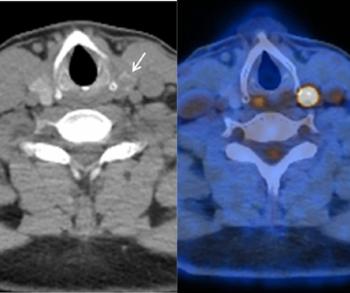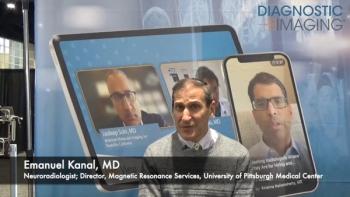
Weight-Bearing X-Rays for Knee Pain Preferable to MRI
Knee MRI does not contribute to clinical decision making among older men presenting with knee pain.
Weight-bearing radiographs performed on patients older than 40 presenting with knee pain may be more efficient and effective than MR imaging of the knee, according to a study published in the
Researchers from Washington University and St. Louis Center for Cartilage Restoration and Repair in St. Louis, MO, undertook a descriptive study to assess patients, aged 40 and older, who presented to a sports medicine division for evaluation of knee pain, comparing how often MRI was obtained by orthopedic referral, how often weight-bearing radiographs were obtained prior to the MRI, and if the imaging influenced treatment recommendations.
A total of 599 patients participated in the study. Physicians documented the presence of a pre-referral MRI and/or plain radiographic studies, the results of weight-bearing radiographs, treatment recommendations, and the impact of any pre-referral imaging.[[{"type":"media","view_mode":"media_crop","fid":"52077","attributes":{"alt":"Musculoskeletal imaging","class":"media-image media-image-right","id":"media_crop_3136446566246","media_crop_h":"0","media_crop_image_style":"-1","media_crop_instance":"6450","media_crop_rotate":"0","media_crop_scale_h":"0","media_crop_scale_w":"0","media_crop_w":"0","media_crop_x":"0","media_crop_y":"0","style":"height: 170px; width: 170px; border-width: 0px; border-style: solid; margin: 1px; float: right;","title":"©decade3d - anatomy online/Shutterstock.com","typeof":"foaf:Image"}}]]
The results showed that 130 patients (22%) had undergone pre-referral MRI, and of these patients, plain radiographic studies were obtained for 58% before they underwent MRI, and 13% underwent weight-bearing radiographs.
Seventeen percent had weight-bearing radiographs that demonstrated more than 50% loss of joint space. According to the researchers, 48% of pre-referral MRIs did not contribute to treatment recommendations. In patients with more than 50% loss of joint space, MRI was considered unnecessary in 95% of the cases.
The researchers concluded that many pre-referral MRIs do not contribute to clinical decision making. Weight-bearing radiographs can help identify those patients in whom MRI is unlikely to be helpful.
Newsletter
Stay at the forefront of radiology with the Diagnostic Imaging newsletter, delivering the latest news, clinical insights, and imaging advancements for today’s radiologists.




























